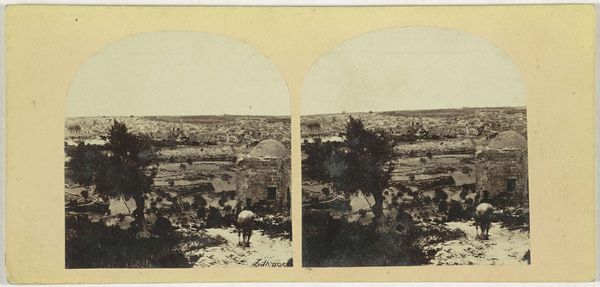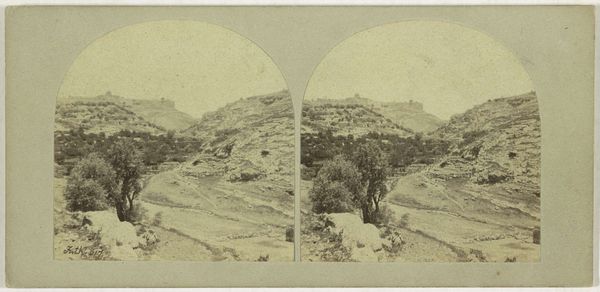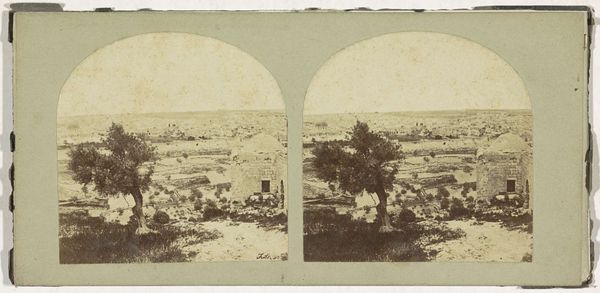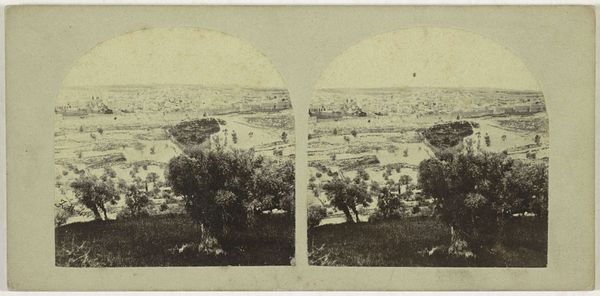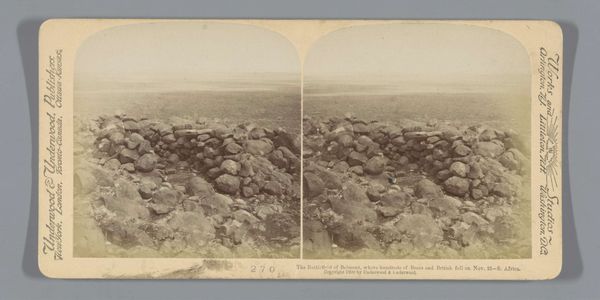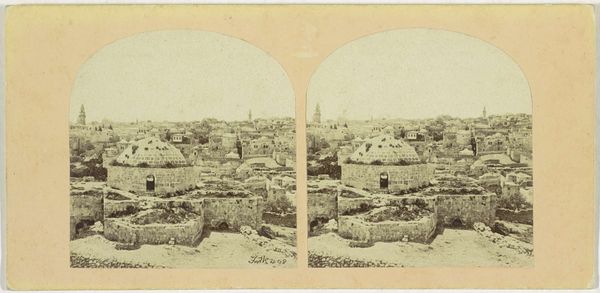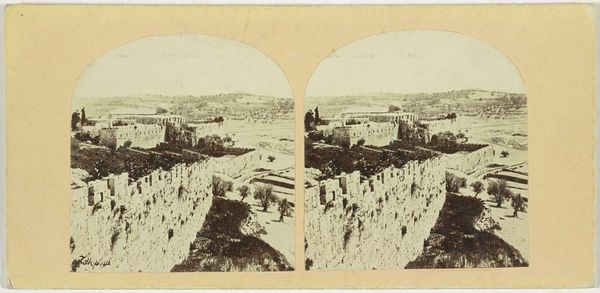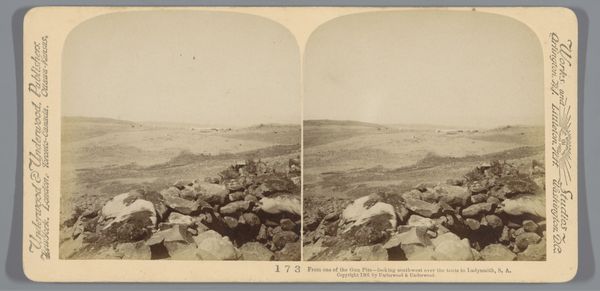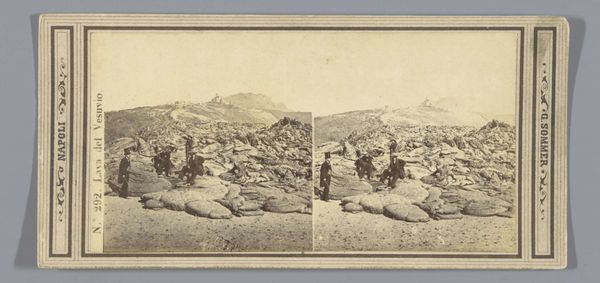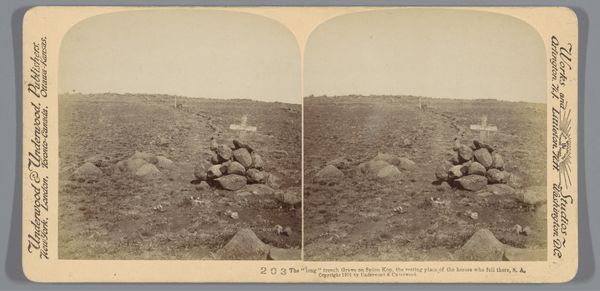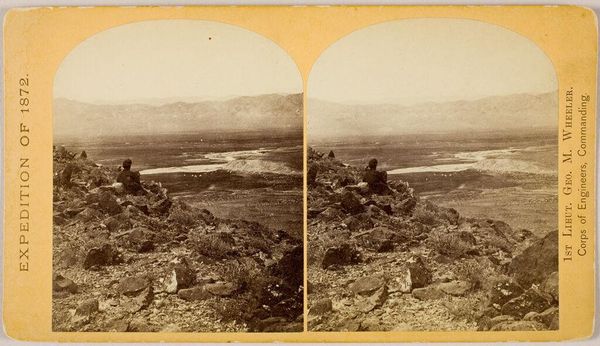
photography, albumen-print
#
landscape
#
photography
#
orientalism
#
cityscape
#
albumen-print
Dimensions: height 84 mm, width 174 mm
Copyright: Rijks Museum: Open Domain
Curator: Looking at this image, I am struck by a feeling of timelessness and a sort of serene silence. The composition is very balanced with a gentle depth that invites the viewer in, even if the tonality is quite muted. Editor: This is Francis Frith's, “Gezicht op Nazareth,” taken sometime between 1859 and 1861. It's an albumen print, and it's currently held in the Rijksmuseum collection. Frith was a fascinating figure who used photography to document regions often filtered through a distinctly European lens during the era of Orientalism. Curator: So, this gaze is significant, then. How did Frith negotiate this very specific form of looking? How does this image perpetuate and possibly subvert power dynamics of that time? I wonder what position Frith was coming from when he decided to frame Nazareth in this light. It definitely prompts a discussion of the West’s fascination with and appropriation of the ‘exotic’ East. Editor: Frith positioned himself as both explorer and documentarian. His photographs were often commissioned and collected back in Europe, feeding a burgeoning market for images of the Holy Land and other "exotic" locations. But it's complicated, he certainly believed in photography's ability to objectively record, but he also actively composed his images, staging scenes, and sometimes even altering the landscapes to create a more picturesque view for his European audience. This tension reveals much about 19th-century colonial attitudes and the politics of representation. Curator: Precisely. By literally framing the scene, Frith controlled the narrative. The way the image highlights specific architectural elements over others could be indicative of a desire to align the scene with certain preconceived Western notions. Editor: The photo offered consumers back in Europe an apparently authentic snapshot. I mean, this is how most people saw Nazareth. What is less often interrogated, I suspect, is whether this is "Truth," with a capital "T," or whether this image also catered to pre-existing cultural appetites for orientalist themes? Curator: The image becomes, in that light, not just a landscape but also a historical artifact in itself. Thank you; it gives us much to think about when looking at such a powerful photo. Editor: Yes, thinking about it, the act of viewing these photographs allows us a perspective on both the depicted landscape and also on the complex dynamics of the image, it challenges us today to bring modern sensibilities to its reinterpretation.
Comments
No comments
Be the first to comment and join the conversation on the ultimate creative platform.
